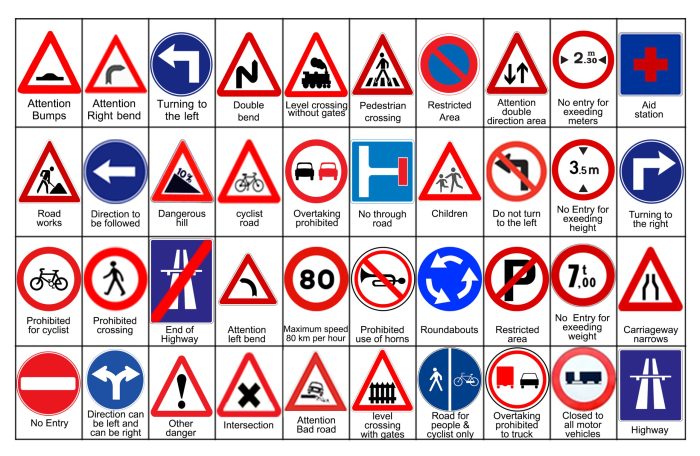The power of intentional attention takes center stage, offering a pathway to enhanced focus and well-being. This exploration delves into the art of directing your mind’s spotlight, moving beyond passive reception and embracing a conscious engagement with the present moment. It’s about choosing where your attention rests, understanding the benefits and obstacles, and ultimately mastering this crucial skill for a richer, more fulfilling life.
This blog post will explore the nuances of intentional attention, from its definition and benefits to practical applications and the challenges we face. We’ll examine how intentional attention affects various aspects of life, including relationships, productivity, and emotional regulation. Discover how to harness the power of intentional attention to unlock your full potential.
Defining Intentional Attention

Intentional attention, a cornerstone of focused awareness, represents a deliberate and conscious act of directing mental resources towards a specific target. It contrasts sharply with passive attention, which arises without conscious effort, and automatic attention, triggered by external stimuli. This conscious effort to focus is crucial for learning, problem-solving, and achieving goals.Intentional attention differs from other forms of attention in its active nature.
While passive attention might be drawn to a loud noise or a striking visual, intentional attention involves a deliberate choice to concentrate on a particular object, idea, or task. This active engagement is a critical element in controlling our cognitive processes and improving our performance in various domains. The intentionality of the focus dictates the specific aspects of the target that receive our attention.
Intentionality in Shaping Attentional Focus
The act of intentionally directing attention shapes the nature of that focus. Intentionality determines what aspects of the environment or internal thought processes are prioritized. This selective focus, a core feature of intentional attention, allows us to filter out irrelevant information and concentrate on what’s most pertinent to our goals. For example, a student focusing on their textbook during a study session is actively choosing to direct their attention to the material, rather than distractions like the sounds of traffic or their thoughts about dinner.
Comparison of Attention Types
Understanding the distinctions between various attention types helps us appreciate the role of intentionality.
| Type of Attention | Description | Intentionality | Example |
|---|---|---|---|
| Intentional Attention | A conscious and deliberate effort to direct mental resources towards a specific target. | High | Focusing on a lecture to understand a concept. |
| Passive Attention | Attention that arises without conscious effort, often triggered by salient stimuli. | Low | Looking up when a loud noise occurs. |
| Automatic Attention | An involuntary response to a stimulus, often driven by pre-existing associations or learned responses. | Very Low | Quickly looking at a red object amidst a variety of colors, due to a prior association with danger or importance. |
Intentional attention allows us to prioritize what we want to focus on, unlike passive or automatic attention, which are largely reactive. The table illustrates the spectrum of intentionality across different attentional processes.
Benefits of Intentional Attention
Intentional attention, the deliberate focusing of our awareness, is more than just a mindfulness practice. It’s a powerful tool that can significantly impact various aspects of our lives, from our relationships to our overall well-being. By consciously choosing where we direct our attention, we unlock a wealth of advantages.Cultivating intentional attention is akin to refining a lens, allowing us to see the world with greater clarity and purpose.
Intentional attention is key, folks. Focusing on the present moment can be transformative, and that includes what you put into your body. Trying out a new morning ritual, like swapping coffee for matcha, can be a powerful way to enhance your focus and energy levels. For example, this what will happen when you replace coffee with matcha delves into the potential benefits of this switch.
Ultimately, it all comes back to how we choose to use our attention, whether it’s in our daily routines or more abstract concepts.
This enhanced perception leads to a deeper understanding of ourselves and our surroundings, fostering growth and fulfillment in all areas of life.
Impact on Relationships
Intentional attention fosters deeper connections with others. When we engage with someone, truly listening and observing without distractions, we communicate empathy and respect. This fosters trust and strengthens bonds. For example, actively listening during a conversation, noticing the subtle cues and emotions of the other person, shows genuine interest and creates a more meaningful connection. Conversely, distraction or inattention can lead to misunderstandings, hurt feelings, and a sense of disconnect.
A simple act of putting down your phone and truly engaging with a loved one can transform a casual interaction into a meaningful experience.
Enhancement of Productivity
Intentional attention significantly improves productivity. When we focus on the task at hand, without being pulled away by distractions, we can achieve higher quality work and complete tasks more efficiently. This focus allows for a more thorough approach, minimizing errors and maximizing output. For instance, dedicating focused time to work, free from social media notifications or other interruptions, can dramatically increase the output of high-quality work.
Conversely, constant distraction leads to fragmented attention, hindering productivity and potentially increasing errors.
Positive Impact on Well-being
Intentional attention contributes to a greater sense of well-being. By directing our awareness towards positive aspects of our lives, we cultivate gratitude and appreciation. This positive focus can reduce stress and anxiety, fostering emotional regulation. For instance, practicing gratitude journaling, where one consciously reflects on positive aspects of the day, can enhance overall well-being. By contrast, constant negative thoughts or rumination, fueled by distraction, can significantly increase stress levels and reduce overall well-being.
Strategies for Enhancing Intentional Attention
Cultivating intentional attention is a skill that can be developed and refined. Consistent practice and conscious effort are key to reaping its benefits.
- Mindfulness Exercises: Regularly engaging in mindfulness exercises, such as meditation or deep breathing, can help train the mind to focus and resist distractions.
- Designated Focus Time: Scheduling specific blocks of time for focused work or activities can create an environment conducive to intentional attention.
- Distraction Management: Identifying and eliminating or minimizing sources of distraction, such as social media notifications or a cluttered workspace, is crucial for maintaining focused attention.
- Gratitude Practices: Regularly practicing gratitude, focusing on positive aspects of life, can shift attention to positive experiences, which further promotes intentional attention.
Intentional attention is a powerful tool that can transform various aspects of our lives. By consciously cultivating this skill, we can unlock a deeper understanding of ourselves, enhance our relationships, boost our productivity, and experience greater well-being.
Practical Applications of Intentional Attention
Intentional attention, the deliberate focus on the present moment, isn’t just a trendy mindfulness practice; it’s a powerful tool applicable across various facets of life. From enhancing productivity at work to nurturing deeper connections with loved ones, intentional attention can significantly improve our overall well-being and experience. It’s about moving beyond autopilot and actively engaging with the world around us.By cultivating this skill, we can transform mundane tasks into opportunities for growth and connection.
Intentional attention allows us to be more present, more engaged, and ultimately, more fulfilled in all aspects of our lives. This intentional focus allows us to notice subtle nuances and appreciate the beauty in the everyday.
Applying Intentional Attention in Diverse Areas
Intentional attention isn’t confined to meditation cushions or quiet retreats. It’s a skill applicable to everyday activities, enriching experiences across all aspects of life. From savoring a meal to navigating a challenging conversation, intentional attention can transform how we interact with the world. It’s about actively choosing to be present, rather than passively reacting.
Practical Techniques for Cultivating Intentional Attention, The power of intentional attention
To effectively implement intentional attention, specific techniques can be employed. These techniques are adaptable to different situations and can be integrated into daily routines. Consistent practice is key to developing this valuable skill.
Intentional attention is key to personal growth. Focusing on the present moment allows you to fully experience life’s beauty and challenges. This often connects to 3 valuable ways to invest in yourself, like prioritizing mindfulness practices and learning new skills. By consciously choosing what you focus on, you unlock a powerful potential for self-improvement, which, in turn, amplifies the impact of intentional attention.
Check out these valuable strategies at 3 valuable ways to invest in yourself to see how you can cultivate this even further.
| Situation | Technique | Example | Expected Outcome |
|---|---|---|---|
| Work | Focused Work Sessions | Set aside dedicated time blocks for specific tasks, minimizing distractions. Engage in a “timeboxing” strategy, where you focus on one task for a set period (e.g., 25 minutes) followed by a short break. | Improved concentration, reduced task switching, increased productivity, and reduced feelings of overwhelm. |
| Relationships | Active Listening | When engaging in conversations, actively listen to the speaker without interrupting. Pay attention to their body language and verbal cues. Try to understand their perspective, even if you disagree. | Enhanced communication, stronger connections, and deeper understanding of others. |
| Meditation | Mindful Breathing | Focus on the sensation of each breath as it enters and leaves the body. Notice the rise and fall of the chest or abdomen. Acknowledge any thoughts or distractions that arise without judgment, gently redirecting attention back to the breath. | Reduced stress, increased calmness, improved emotional regulation, and a heightened sense of awareness. |
| Mindful Eating | Sensory Awareness | When eating, pay close attention to the colors, textures, and aromas of the food. Savor each bite, noticing the taste and the physical sensations in your mouth and body. | Improved appreciation for food, reduced overeating, and a deeper connection with the nourishment being consumed. |
Obstacles to Intentional Attention

Cultivating intentional attention is a journey, not a destination. While the benefits are significant, numerous obstacles can hinder progress. Understanding these hurdles is crucial for developing effective strategies to overcome them and maintain focus. This section delves into common impediments to intentional attention, offering insights into their nature and potential solutions.The path to focused attention is often fraught with distractions.
Internal chatter, anxieties, and external stimuli constantly compete for our mental resources. Identifying these distractions and developing coping mechanisms is key to maintaining a state of intentional attention.
Common Internal Distractions
Internal distractions stem from within ourselves. These are often subtle but persistent, and can significantly impact our ability to concentrate. Unresolved anxieties, worries, and intrusive thoughts can easily pull our focus away from the present moment. Negative self-talk, past regrets, or future anxieties all contribute to internal noise.
- Unresolved Emotions: Unprocessed emotions, such as anger, sadness, or fear, can hijack our attention, leading to rumination and difficulty focusing. Addressing these emotions through mindfulness practices, journaling, or therapy can help free up mental space for intentional attention.
- Procrastination and Task Avoidance: The fear of starting a task or the discomfort of confronting a challenging project can lead to mental distractions. Breaking down large tasks into smaller, manageable steps, prioritizing tasks, and creating a supportive environment can reduce this obstacle.
- Perfectionism: Striving for unattainable standards can lead to excessive self-criticism and a constant sense of inadequacy. Adopting a more realistic approach, focusing on progress over perfection, and accepting imperfections are crucial to overcoming perfectionism’s hindering effect.
External Distractions
External stimuli, such as noise, visual clutter, and social interruptions, constantly vie for our attention. Recognizing these external distractions is the first step toward minimizing their impact.
- Environmental Noise: Loud noises, disruptive conversations, or even background music can be significant distractions. Using noise-canceling headphones, creating a quiet workspace, or choosing a more secluded environment can mitigate these distractions.
- Visual Clutter: A messy workspace or a cluttered environment can lead to mental disorganization and difficulty focusing. Creating a clean and organized workspace, decluttering your surroundings, and using visual aids strategically can reduce this distraction.
- Social Interruptions: Emails, phone calls, and social media notifications can disrupt focus. Setting boundaries, scheduling specific times for checking communications, and using website blockers can help manage these distractions effectively.
Overcoming Obstacles
Overcoming these obstacles requires proactive strategies. Establishing routines, practicing mindfulness, and understanding your personal triggers are crucial.
- Mindfulness Practices: Regular mindfulness exercises, such as meditation or deep breathing, can strengthen attention span and reduce the impact of distractions. These practices help train the mind to observe thoughts and feelings without judgment, fostering a greater sense of presence.
- Time Management Techniques: Techniques like the Pomodoro Technique or time blocking can help structure your day and create focused work periods. This structured approach can minimize the impact of distractions and improve productivity.
- Identifying Personal Triggers: Understanding what specific situations or activities trigger your distractions can help you develop preventative measures. Once you recognize your triggers, you can actively choose to avoid them or develop coping mechanisms to manage their effects.
Intentional Attention and Mindfulness
Intentional attention, the deliberate focus on a specific object or experience, is a powerful tool for personal growth. Mindfulness practices, rooted in the cultivation of present-moment awareness, provide a fertile ground for developing and strengthening intentional attention. This connection is deeply intertwined, as mindfulness itself hinges on the capacity to direct attention without judgment.Mindfulness cultivates a heightened awareness of the present moment, enabling individuals to observe their thoughts, feelings, and sensations without getting swept away by them.
This non-judgmental observation is the cornerstone of intentional attention. By practicing mindfulness, individuals develop the skill of directing their attention with greater intentionality, leading to a deeper understanding of themselves and their experiences. This process fosters self-regulation and a more conscious relationship with the world around us.
The Intertwined Nature of Mindfulness and Intentional Attention
Mindfulness practices are intrinsically linked to intentional attention. The core principle of mindfulness, focusing on the present moment without judgment, directly supports the ability to intentionally direct attention. This process allows for a clearer understanding of thoughts, feelings, and sensations, fostering greater self-awareness and control over our mental processes.
Mindfulness Exercises for Intentional Attention
Mindfulness exercises provide concrete methods for cultivating intentional attention. These practices help individuals develop the skill of focusing their attention on specific aspects of their experience, such as their breath, bodily sensations, or sounds. Regular practice cultivates a heightened awareness and cultivates the ability to redirect attention when it wanders.
- Body Scan Meditation: This practice involves systematically bringing attention to different parts of the body, noting sensations without judgment. By directing attention to physical sensations, individuals gain a deeper awareness of their physical selves and learn to observe physical experiences without getting caught up in them. This exercise is highly effective in developing body awareness, a crucial component of intentional attention.
A heightened awareness of the body’s response to stress or other stimuli, for example, can lead to more effective self-regulation.
- Mindful Breathing: This involves focusing on the sensation of the breath entering and leaving the body. By anchoring attention on the breath, individuals can learn to redirect their attention when it wanders to thoughts or emotions. This simple yet powerful technique is highly effective for managing stress and cultivating a sense of calm and control. Regular practice can lead to improved focus and clarity.
- Mindful Walking: This exercise involves paying attention to the physical sensations of walking – the contact of feet with the ground, the movement of the body, and the sensations in the legs and feet. It requires a deliberate focus on the present moment and can help to cultivate a sense of groundedness and presence. This is a valuable technique for developing intentional attention in everyday activities, which is essential for stress management and mindful living.
Tailoring Mindfulness for Intentional Attention
Mindfulness practices can be tailored to specific goals and needs. Individuals can adapt techniques to focus on particular areas of interest, such as improving focus in work or study or cultivating greater emotional regulation. The ability to tailor mindfulness practices is a key factor in making them sustainable and effective in everyday life.
- Specific sensory experiences: Mindfulness can be applied to sensory experiences like observing colors, sounds, and textures in detail. This heightened awareness of sensory experiences can enhance appreciation for the world around us and can cultivate a stronger connection to our surroundings.
- Emotional regulation: Mindfulness can be used to observe emotions without judgment. By practicing non-reactive awareness of emotional responses, individuals can develop greater control over their emotional reactions and reduce emotional reactivity. This is a crucial component in developing intentional attention and emotional intelligence.
Intentional Attention and Performance
Intentional attention, the deliberate focusing of our awareness, isn’t just a mindfulness practice; it’s a powerful tool for enhancing performance across various domains. By consciously directing our mental resources, we can unlock hidden potential and achieve more significant results. From boosting creativity to improving analytical skills, intentional attention empowers us to perform at our best.Intentional attention functions as a crucial filter, allowing us to prioritize relevant information and minimize distractions.
This focused mental state enables efficient processing of information, leading to enhanced productivity and improved performance on both creative and analytical tasks. By understanding the nuances of how intentional attention impacts different types of tasks, we can tailor our strategies for optimal results.
Impact on Different Task Types
Intentional attention demonstrates distinct effects on various tasks. Creative tasks, often characterized by divergent thinking and exploration, are significantly enhanced by intentional attention. By focusing on generating ideas and exploring different possibilities without judgment, individuals can unlock their creative potential. Analytical tasks, requiring meticulous attention to detail and logical reasoning, also benefit from intentional attention. This focused approach allows for deeper analysis and more accurate conclusions.
Examples of Enhanced Productivity
Intentional attention can drastically improve productivity and efficiency in numerous ways. For example, a programmer focusing intently on a specific code segment can identify and rectify errors more quickly and effectively. Similarly, a writer, through intentional attention, can stay focused on the narrative, allowing for a more compelling and engaging story. In a business setting, a sales representative using intentional attention during a negotiation can better understand the client’s needs and tailor their approach for a more successful outcome.
These examples highlight how intentional attention can lead to tangible improvements in various professional and personal endeavors.
Strategies for Optimizing Performance
Several strategies can optimize intentional attention for peak performance. Developing a consistent mindfulness practice can cultivate focus and awareness. Utilizing techniques like the Pomodoro Technique, where focused work sessions are interspersed with short breaks, can help maintain optimal attention span. Furthermore, establishing a dedicated workspace free from distractions can significantly improve concentration. These strategies can create an environment conducive to intentional attention and its subsequent benefits.
Practicing these methods over time leads to a gradual increase in the capacity to maintain focused attention, thereby enhancing overall performance.
Specific Strategies for Different Task Types
For creative tasks, strategies like brainstorming sessions or freewriting exercises, coupled with intentional attention, can unlock new perspectives and innovative ideas. For analytical tasks, techniques like mind mapping or using structured note-taking systems can enhance the organization and comprehension of complex information, all facilitated by intentional attention. Tailoring strategies to the specific task type ensures maximum effectiveness and efficiency.
Intentional attention is key to productivity, right? Focusing on the task at hand is crucial, but sometimes you just need a little nudge to get moving. Check out these 6 ways to just get things done already 6 ways to just get things done already for actionable tips. Ultimately, intentional attention, combined with practical strategies, makes the difference between feeling overwhelmed and feeling accomplished.
Incorporating these strategies into daily routines can gradually increase one’s ability to manage attention effectively.
Intentional Attention and Emotional Regulation: The Power Of Intentional Attention
Intentional attention, the conscious and deliberate focus of our awareness, plays a crucial role in managing our emotional landscape. It’s not about ignoring or suppressing emotions, but rather about understanding and responding to them in a more balanced and adaptive way. By training our minds to be present and observant, we can gain valuable insights into our emotional responses and develop strategies to navigate challenging situations with greater ease.Intentional attention acts as a bridge between our emotional experiences and our responses.
It allows us to become aware of the sensations, thoughts, and feelings associated with an emotion, rather than being swept away by them. This awareness empowers us to choose our reactions, promoting emotional regulation and reducing the intensity of negative emotions.
Strategies for Navigating Challenging Emotional Situations
Developing strategies for managing challenging emotional situations is crucial for effective emotional regulation. These strategies, built upon the foundation of intentional attention, empower us to respond rather than react. By practicing mindful awareness, we can observe our emotions without judgment and understand their underlying triggers.
- Identifying Triggers: Intentional attention encourages self-reflection. By consciously observing our thoughts and feelings, we can identify patterns and triggers that lead to intense emotional responses. Recognizing these patterns allows us to anticipate and prepare for challenging situations, reducing their impact.
- Mindful Observation of Emotions: Instead of immediately reacting to a surge of emotion, practice observing it with a sense of curiosity. Notice the physical sensations, thoughts, and feelings associated with the emotion. This non-judgmental observation creates distance from the emotion, allowing for a more balanced perspective.
- Emotional Labeling: As we observe our emotions, naming them can be a powerful tool. Recognizing the emotion—whether it’s anger, sadness, or fear—helps to validate the experience and decrease its intensity. By labeling the emotion, we acknowledge its presence without becoming overwhelmed by it.
- Grounding Techniques: Grounding techniques, often used in mindfulness practices, involve bringing our attention to the present moment. Focus on physical sensations like the feeling of your feet on the ground, the temperature of the air on your skin, or the taste of something you’re eating. These techniques can help anchor us in the present and reduce the overwhelming feeling of emotional intensity.
Reducing Stress and Anxiety Through Intentional Attention
Intentional attention offers a powerful tool for reducing stress and anxiety. By training our minds to focus on the present moment, we can minimize the impact of worries about the future or regrets about the past.
- Mindful Breathing: Focus on the sensation of your breath entering and leaving your body. This simple practice can quickly calm the nervous system and bring a sense of groundedness. Slow, deep breaths regulate the body’s physiological response to stress, reducing anxiety.
- Progressive Muscle Relaxation: Intentionally tense and release different muscle groups in your body, paying close attention to the sensations of tension and relaxation. This practice helps to release physical tension associated with stress and anxiety, creating a sense of calm.
- Body Scan Meditation: Bring your attention to different parts of your body, noticing any sensations of tension or discomfort. This practice helps to identify and release physical stress, promoting relaxation and reducing anxiety.
Examples of Intentional Attention in Action
Imagine a situation where you’re feeling overwhelmed at work. Instead of reacting impulsively, you can use intentional attention. By focusing on your breath, you can ground yourself in the present moment. Recognizing the physical sensations of your heart rate increasing allows you to acknowledge your stress without getting swept away by it. This conscious awareness empowers you to choose a more balanced response, fostering emotional regulation and reducing stress.
Ultimate Conclusion
In conclusion, intentional attention isn’t just a concept; it’s a practical tool for navigating the complexities of daily life. By understanding the power of intentional attention and its multifaceted impact, we can cultivate a deeper connection with ourselves and the world around us. This post has highlighted the significance of intentionality in shaping our attentional focus and provided valuable strategies for cultivating it.
Embracing intentional attention is a journey, not a destination, and with practice and awareness, you can unlock a greater sense of presence, purpose, and well-being.











